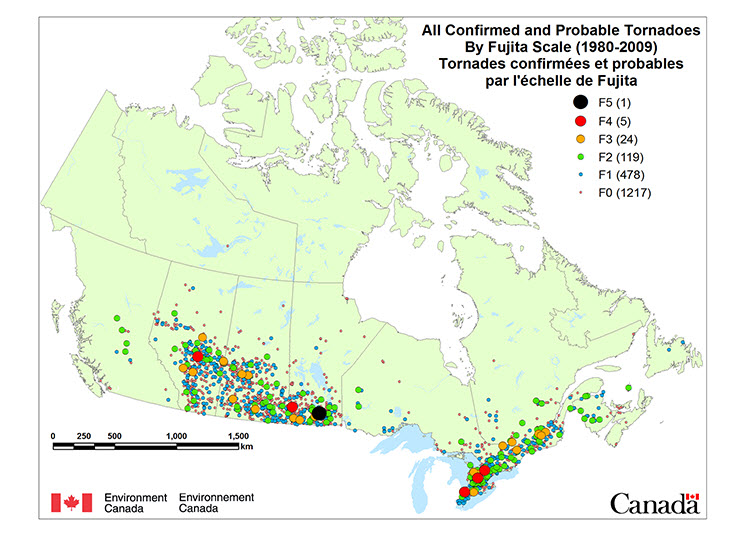Spring has begun, which means summer is around the corner. And with it, tornado season.

READ MORE: Illinois man records terrifying moments as tornado strikes home
Even though meteorologists can’t predict exactly when or where a tornado will strike, they do understand the dynamics of them.
What it is
Simply put, a tornado is a vertically rotating column of air that extends from a cloud (typically a cumulonimbus) down to the ground. They typically form during strong thunderstorms, mainly supercells. These kind of thunderstorms can last for hours and can bring a various assortment of dangerous weather conditions including hail, frequent lightning and high winds.
How tornadoes form
Most tornadoes only last a few minutes, but they can last an hour or more, travelling over many kilometres.
On average, the United States gets about 1,300 tornadoes a year, putting it at the top spot in the world for tornado occurrences. Surprisingly, Canada comes in at number two with about 100 tornadoes a year.
WATCH: Amateur video captures tornado forming in Clearwater, Florida

There are two critical elements to producing a tornado: updraft and wind shear.
READ MORE: Tornadoes
Updraft is the upward movement of air; wind shear is the change in direction or speed of wind with height.
With supercell thunderstorms, sometimes the rotating column of air on the ground is raised vertically by the updraft. The rising column of air can cause a mesocyclone, a rotating thunderstorm. It’s these rotating thunderstorms out of which a tornado is born.
The tornado
The rotating column of air descends and brings down the water vapour with it, in the form of a funnel cloud. When the funnel touches the ground, we call it a tornado (it isn’t a tornado until it reaches the ground).
Though tornadoes can last over an hour, the average duration is 10 minutes, according to the U.S. National Weather Service.
The strength of tornadoes is measured using something called the Enhanced Fujita scale.
Though the U.S. is famous for its “tornado alley,” Canada has two of its own: one, in Ontario, stretches from Windsor northeast toward eastern Ontario; the second is spread out across Alberta, Saskatchewan and Manitoba.
Most tornadoes in Canada occur in southern Ontario and the Prairies.
READ MORE: Is Canada experiencing more tornadoes?
And while the public is fascinated with tornadoes, stopping to record one can put you in extreme danger. Even though you might think the tornado is at a safe distance, it’s important to remember that there is no safe distance: the tornado could change direction (it’s often difficult to tell in which direction it’s moving) and the main source of injury and death isn’t the tornado itself, but the debris that can be flung at great distances and at tremendous speeds.





Comments